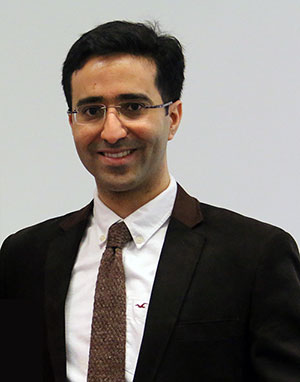Congratulations on your graduation, Doctor Saleh Kargarrazi
The topic of Doctor Saleh Kargarrazi PhD dissertation is "Power Integrated Circuit (IC) Design for Extreme Environments"
Where are you from and where did you study before coming to KTH?
I am from Iran, and I studied my B.Sc. in Electrical Engineering in Ferdowsi University in Iran with specialization in Electronics. I came to Sweden in 2008 and got my M.Sc. in System-on-Chip design. Then I worked as an IC designer for international companies in Sweden before starting my Ph.D.
What is your topic and why did you choose it?
My research topic is Power Iintegrated circuit (IC) Design for Extreme Environments. There are many fields in which the electronics are a bottleneck, as soon as the temperature rises above a limit. For exploring the surface of Venus, for example, both Europe and US have shifted their focus on technologies like SiC and want to have electronic circuits operational in such harsh environments. In downhole drilling, there are many imposed system costs that can be avoided by adopting SiC electronics. In automotive, and with today's trend of HEV and EV vehicles, thinking about new electronics technologies for achieving higher efficiency is inevitable. And these are just a few very obvious areas that the research can relate to.

Describe your topic in short.
My research is focused on power IC design for extreme temperatures as high as 500 oC and even beyond. Today, not many integrated electronics solutions exist that can tolerate such temperatures. Silicon Carbide is a superior material suited for such environments and my research was dedicated to several IC design and implementation on SiC bipolar process. The circuits range from operational amplifiers to drivers for power switches and to complete power supply solutions.
Tell me something about your results.
We have implemented ICs that are operational in a wide range of temperatures from room temperature up to 500 oC. Moreover, The devices used in the technology have been properly modeled to be able to be used together with circuit simulators. I designed high-temperature power supplies to provide regulated voltage in a very wide temperature range, high-temperature drivers for power switches, and also high-temperature operational amplifiers.
What will the future bring for your research topic?
The SiC device market is growing. The car makers have slowly started to adopt SiC solutions.The semiconductor device manufacturers are also attracted to larger electronics corporations. In future the complete electronics system for extreme environments will be available which can help to acquire more accurate signals from sensors and to power the actuators more efficiently. And all these will come at no extra system cost. Also I hope to see a Venus lander equipped with embedded SiC electronics in not-very-far future.
What are your future plans?
I am going to continue my academic career at Stanford University as a post-doctoral researcher. Also, our team has recently won the annual award of KTH innovation with an innovative idea called EVintellect. In parallel, I am going to work on our startup idea.

